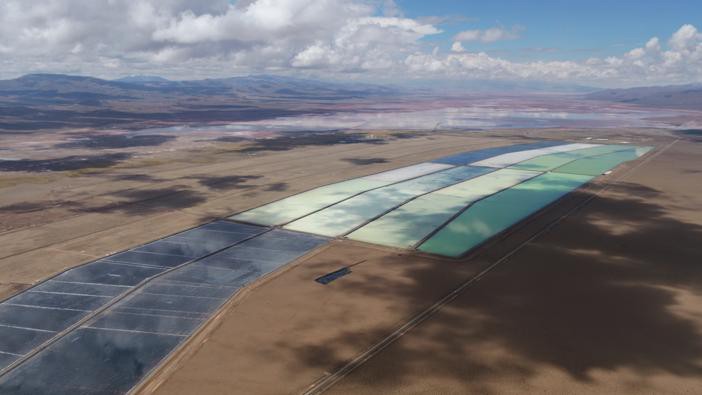Rapid demand growth thanks to the energy transition away from fossil fuels could lead to a shortage of several metals over the next decade unless there’s more investment in the segment. This is according to the Energy Transitions Commission (ETC), a global group of power and industrial companies, consumers, financial institutions, and scientists.
Large supply gaps for lithium, nickel, graphite, cobalt, neodymium, and copper could lead to higher prices and delay the goal of reaching net-zero emissions by 2050, the ETC said in a report. To reduce the risk of shortages, mines need to produce more of these metals. However, the ETC explained, large-scale mining projects can take up to 20 years to come online, and the last decade was characterized by a lack of investment in exploration and output.
ETC Chair Adair Turner said in the report: “In some key minerals—particularly lithium and copper—it will be challenging to scale up supply fast enough over the next decade to keep pace with rapidly rising demand.”
Annual capital investment in energy transition metals averaged $45 billion over the last two decades, compared with the $70 billion needed each year through to 2030 to expand supply, the ETC said.
This opens up lots of opportunities for any company (and its investors) that steps in to try and fill the gap between supply and demand for energy transition metals.
Let’s take a look at a key one…

Move Over Lithium Miners, Here Comes Exxon
One company stepping into the breach is the oil and gas giant ExxonMobil (XOM), which seems to be going all-in on lithium. Bloomberg reports that Tesla, along with several other automakers including Ford and Volkswagen, are in talks with the company to buy lithium.
Exxon—best known for its oil production, which is threatened by the electric vehicle revolution—has been looking to get into the lithium business. The report also says that in addition to Tesla, Ford, and Volkswagen, Exxon is in talks with battery manufacturers Samsung and SK about supplying lithium.
Exxon revealed its seriousness about the lithium business in May. The energy company spent upward of $100 million for some acreage owned by privately held Galvanic Energy. The deal includes more than 120,000 acres in the Smackover formation, upper Jurassic rock found at depths of about 9,000 feet.
A highly sought-after oil and gas prospect in the 1940s, the Smackover is known today more for making Arkansas the world’s second-largest supplier of bromine. Like the bromine, the lithium in the Smackover is found in the oilfield brine. It therefore can be sourced using many of the same techniques used by the oil and gas industry. Thus, Exxon’s interest.
The Smackover’s location puts ExxonMobil in a position to become a key supplier to the growing domestic EV manufacturing base. The U.S. is currently home to just one lithium mine, in Nevada.
Galvanic estimates the acreage holds four million tons of lithium carbonate equivalent (LCE), which it says is enough to help build 50 million EVs. Galvanic also reports that test wells drilled recently showed an average LCE quantity of 325 milligrams per liter, which it says is the highest concentration of any lithium brine reservoir in North America.
Exxon management has wisely decided to partner with another company to expand its acreage in the Smackover. This deal presents a major investment opportunity. Let me explain…
Exxon Teaming with Tetra Technologies
In late June, Exxon agreed to develop more than 6,100 lithium-rich acres in Arkansas with TETRA Technologies (TTI).
So, who the heck is TETRA Technologies? Here is the description from its website:
Founded in 1981, TETRA Technologies is an energy services and solutions company, focused on completion fluids, calcium chloride, water management solutions, frac flowback and production well testing services. Calcium chloride is used in the oil and gas, industrial, agricultural, road, food and beverage markets.
TETRA is evolving its business model by expanding into the low carbon energy markets with its chemistry expertise, key mineral acreage and global infrastructure. Low carbon energy initiatives include commercialization of TETRA PureFlow® ultra-pure zinc bromide clear brine fluid that is used for stationary batteries and energy storage and development of TETRA’s lithium and bromine mineral acreage to meet the growing demand for oil and gas products and energy storage.
The company signed an agreement with Saltwerx to develop 6,138 acres of lithium and bromine-filled salty brine deposits in Arkansas. Saltwerx is a subsidiary of Exxon that it acquired earlier this year when it bought a neighboring Arkansas parcel of 100,000 acres from the aforementioned Galvanic Energy.
By teaming with Exxon, TETRA gains a large partner with capital to help it produce bromine. The company currently buys bromine from Lanxess (LNXSF) to produce a material used by Eos Energy Enterprises (EOSE) to manufacture batteries.
In 2021, TETA started commercial production of a clear zinc-bromide fluid, sourced from Arkansas brine, which it supplies to makers of non-lithium batteries and other energy storage applications.
Even before the Exxon deal kicks in, the company seems to be doing well. On July 31, it reported second quarter results, with revenues hitting a record high (excluding discontinued operations) of $175.5 million. This number was an increase of 25% from the second quarter of 2022 and 20% sequentially.
I really like the deal with energy powerhouse Exxon. Especially when you consider how badly the U.S. needs domestically sourced lithium and bromine in order to create a domestic battery production industry.
TETRA Technologies is a speculative buy anywhere up to $5.50 a share.





